How buffel grass changed the dead heart of Australia
When you enter the Northern Territory from South Australia the landscape changes immediately from mulga scrub to more open savannah woodland dominated by the introduced buffel grass (Cenchrus ciliaris).
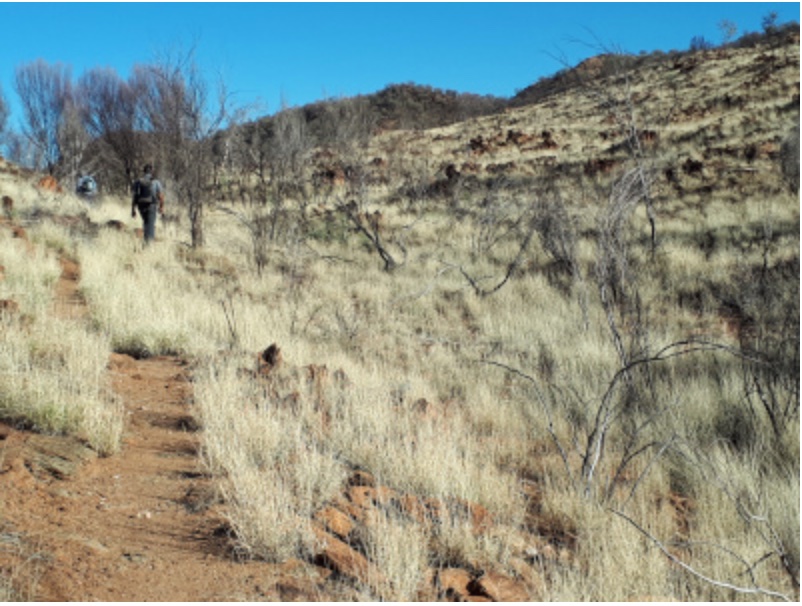
Photo courtesy-Tony-Faithfull-https-www.faithfull.id_.auindex.phpweeds13-buffel-grass-changing-the-ecology-of-the-west-macdonnell-ranges-2.jpg
Buffel grass is a deep-rooted perennial native to Africa, the Middle East and India. This makes it ideal to survive in Australian soil and climate conditions.
Buffel grass has a reputation of invading large parts of Central Australia. A black-headed variant was first introduced either accidently from worn saddles packed with buffel grass seed, or it was deliberately planted. The Afghans used to plant buffel grass at waterholes as a way of marking their long trails and treks. It was first recorded in Alice Springs in 1930. According to writer and Aboriginal historian, Dick Kimber, Aboriginal women used to collect seeds in giant bags for station masters so that when the rains came, buffel grass could grow for the cattle. In the 1950s it was near Barrow Creek and in patches along the Todd River. After World War II, the fortunes of the cattle industry in central Australia were considered a priority. It is believed that some stations were provided with bulk quantities of buffel grass seed from the Federal government before any improvement work by CSIRO.
In 1953, CSIRO established an office in Alice Springs. They set up study sites to trial different pastures. Towards the end of the decade, drought became more and more acute. Cattle were starving and dying. Much of the country was denuded of ground cover. This followed particularly bad droughts in the 1930s and 40s. There were massive dust storms around Alice Springs over 30 years. In the thousands of hectares of bare ground, every breeze blew dust. Fences were buried in moving sand. The predominant direction of dust storms was from the south east, which included dust from ‘natural’ sources in the lake beds, floodplains and dunefields of the lower Lake Eyre Basin. Combined with a prolonged drought, the dust storms were dense and frequent. People ate and drank red dust; they slept with it between their sheets.
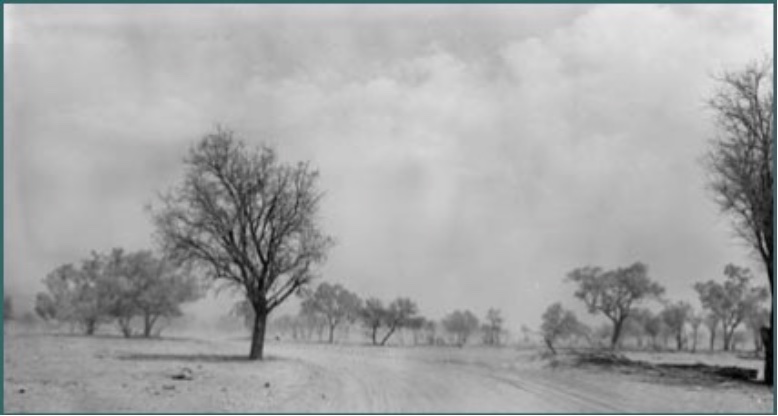
From the 1960s, turboprop and pure jet passenger aircraft replaced the piston engine. The former engines were very sensitive to dust-laden air. The Central Australian dust storms affected flight schedules of planes across Australia. This resulted in the only attempt to rehabilitate wind eroded land in Australia.
A dust exclusion zone was declared to the south of Alice Springs. A large-scale buffel grass planting program commenced in this zone and extended beyond on many cattle stations. Buffel grass does not readily establish on eroded or scalded areas without some form of mechanical assistance. Clay-pan areas were ploughed and planted in a spiral pattern, which are still visible from the air today. The Northern Territory Government set up trials in the 1970s to test six strains of buffel and birdwood grass. Cattle were allowed to graze these grasses and the three most preferred strains were planted. The initial work was modest, but things changed with the rains in the 1970s. The success of buffel grass encouraged its widespread planting for pasture and soil stabilisation. Many thousands of hectares were planted with buffel grass. Mechanical sowing was a huge success, coupled with some above average rainfall. Buffel grass filled an empty and scalded landscape that billowed with dust.
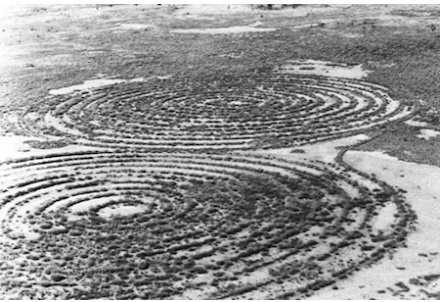
Since the mid-1990s, buffel grass has been so successful, it now dominates hillsides and alluvial and calcareous soils, only struggling on red or heavy clay soils. The former is where mulga and spinifex dominate. Well established on stations, it quickly spread elsewhere and now covers areas such as the West McDonnell National Park. While it provides feed for cattle all year round and helped arrest the dust storms, it is now so dominant that it is a serious fire hazard and there are claims it has eliminated large areas of wildflowers. Long-term residences say profuse and widespread scenes of wildflowers are no longer seen in the Centre. Cultivars are also hybridising. There are concerns how long native seeds can remain viable within the buffel grass monoculture. Many conservation management programs have been introduced to control buffel grass. What was once seen as a saviour is now increasingly declared a scourge.
There are strong arguments in favour of buffel grass. The beef industry is a very important part of the economy. Buffel grass has lifted the carrying capacity because of its palatability, ability to produce significant amounts of forage and its tolerance to drought and grazing. Buffel grass responds to rapidly to rain. Green buffel grass is relatively nutritious with about 14 per cent crude protein.
The extensive root system of buffel grass enables it to bind soil particles slowing run-off, suppressing dust and vastly extending the length of the grazing period from any rainfall event. The tussock base and leaves help impede overland flow of water and the erosive impact of raindrops. One advantage of buffel grass as a perennial plant that is often overlooked is its topsoil building ability. The thin layer of topsoil in Central Australia was lost many years ago to wind and dust storms. These benefits are evident around Alice Springs and surrounding indigenous communities where widespread buffel grass plantings over many years show a reduction in erosion and the rehabilitation of damaged land. Pastoralists argue that there is no comparison between the country around Alice Springs in the 1950s and 60s compared to what you see today.
But pastoralists need to be careful as long-term productivity may decline. This is because when buffel grass is first introduced, stock do very well on it. There are still plenty of native grasses and forbs around. Cattle fatten and breed on the nutrients from the native plants. However, they will eventually eat out the ‘sweet’ short grass leaving only buffel grass. When times are dry, they rely on eating the buffel grass. This means the cattle will not do as well.
On the other hand, buffel grass is a very dominant species. The shading beneath its tussocks is so great it prevents other species from competing for light, as well as nutrients. Buffel grass displays allelopathic tendencies by secreting a toxin from its roots to poison nearby plants. The problem is where buffel grass has been allowed to colonise and remains unmanaged. Increased fuel loads have led to increased fire intensity. A high volume of dry plant matter can accumulate increasing the intensity of fires. Many native plant species are unable to cope with the increased fire intensity. A number of places I visited in the West and East MacDonnell Ranges had woodlands severely damaged from fires fuelled by buffel grass. In January 2019, a large and hot fire burnt 50 percent of the West MacDonnell Ranges National Park. This included the watercourse heading into Standley Chasm where buffel grass is known to be threatening riparian systems.
It is important that landholders, who prize the presence of buffel grass on their land, are also conscious of its damaging effects in areas where it is not required or remains unmanaged. I see fire as playing a crucial role to prevent its spread. An integrated management approach to control buffer grass should be adopted. Control burns as soon as possible after curing should reduce high fuel loads prior to physical and chemical control to regenerating tussocks.
Buffel grass is a classic metaphor for settlement patterns in an arid landscape. A desire to overcome limitations and create wealth but with little thought to what consequences may result. Early arid exploration was marked by bitter disappointment and failure. Nearly two hundred years later, the barriers have been overcome by making alterations. But has the circle turned too far, and will well-meaning modifications unleash destructive effects?
A myopic view on managing invasive gamba grass outbreaks has led to a dramatic spread in tropical Australia
Gamba grass (Andropogon gayanus) is a highly invasive weed in the tropical savannas of Northern Australia. Gamba grass was first introduced to Australia in the 1930s for testing as a cattle pasture in the Northern Territory and Queensland. It now has a reputation as a destructive weed spreading quickly through the pasture, bushland and riverine systems. As a result, it has been declared a weed in the Northern Territory, Western Australia and Queensland. A cost benefit analysis claimed the public burden of dealing with the weed’s impacts was greater than any private benefits gained by pastoralists.
However, pastoralists counter that gamba grass has been demonised. They believe that it is a perennial pasture species of considerable importance to graziers in Northern Australia. It is an extremely hardy species in tropical climates surviving on infertile soils. Pastoralists can carry 40 times more cattle on gamba than on native pastures.
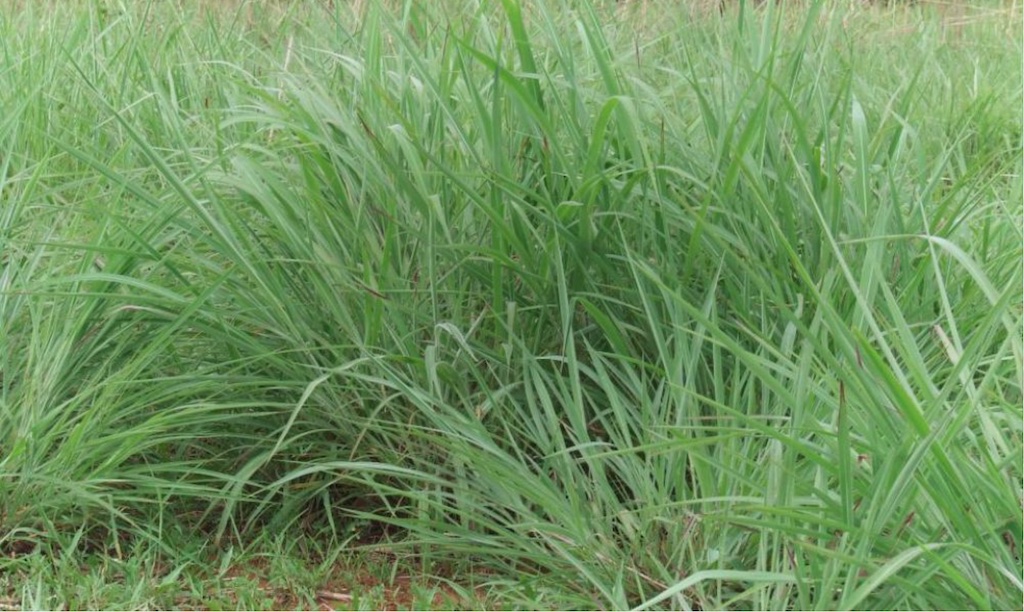
If properly managed and grazed, they believe it can be a highly effective pasture species. Good management of gamba grass involves keeping the plant palatable, not woody or hardened, and preventing seed formation and dispersal. Farmers have suggested establishing buffer zones between adjoining properties and gamba-free areas as a good management practice.
Gamba grass is a dominant plant species that can develop into a monoculture towering up to four metres high, replacing native grasses if it is not managed. The fuel loads supported by these unmanaged stands of gamba grass are four times greater than in native grass communities. This can lead to more intense fires and altering fire regimes. A core infestation of up to 1.5 million hectares is located in the Darwin, Batchelor and Katherine regions of the Northern Territory; a similar area at Cape York and Mareeba in Queensland; and a relatively small infestation in the East Kimberly region of Western Australia. These stands of grasses are predominantly on public land where cattle grazing is non-existent. Thus the grass continues to spread without any thoughtful, active management approach other than costly chemical control and deliberate burning programs. These have shown to be ineffective in checking the spread of the grass.
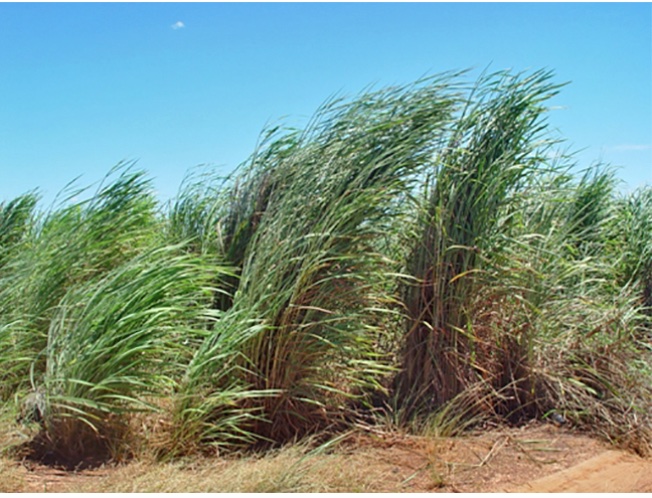
The CSIRO is working on developing biocontrol options, such as fungal pathogens, worms and an insect stem borer to help reduce the spread of gamba grass. But until these options come to pass, something needs to be done on the unmanaged stands. Instead of demonising pastoralists and spending public money on ineffective strategies, conservationists, academics and bureaucrats should be looking to work with pastoralists. Why not introduce an active grazing regime in appropriate areas to halt the spread of this environmentally dangerous grass when left unchecked, and save money on chemical control?
For example, a research group in the Northern Territory called the Centre for Conservation Geography (CCG) ‘informs policymakers on the varied economic impacts of gamba grass infestation and, thus the potential costs of delayed or inadequate responses, or a failure to act’. They advocate ‘adequate resourcing of on-ground action’. Presumably, they were influential in the Northern Territory government legislating property owners to either control or eradicate gamba grass on their property, using various strategies such as fire and herbicides. None of the strategies involves active management through cattle grazing. Yet on public land, the government gets away with inadequate resourcing and control strategies. Consequently, gamba grass quickly spreads through public lands in the Northern Territory, including infestations inside Litchfield and Katherine Gorge National Parks.
The CCG advocates spending millions of dollars each year on chemical control in a futile attempt to control the grass in unmanaged stands.[1] Nowhere in their report do they consider active management. Nowhere in their report do they recognise the work by pastoralists in managing gamba on their properties successfully. And nowhere in their report is there a recognition of the proactive work by pastoralists in setting up buffer zones to prevent the spread of the grass from their properties.
[1] Beaumont, T., Kennedy, S. & Keily, T. (2018) Counting the cost: economic impacts of gamba grass in the Northern Territory. CCG, Darwin
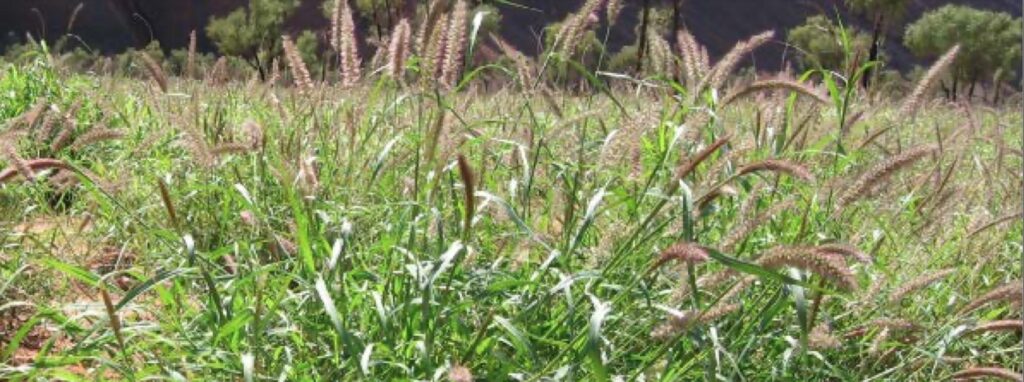
Robert, well researched and well written. John
A very interesting article.
In Queensland, there are widespread plantings of Buffel/Green Panic grass, especially in the Brigalow areas. There was widespread clearing of Brigalow in the 50’s – 80’s for cattle grazing. The Brigalow country is a heavy black soil clay , typically with Gilgai (naturally occurring potholes which hold water after rain). These soils are high in phosphorous which is not common in many Queensland soils, and the cattle do very well in this country. I have a friend who had some coastal red soil country which he sowed with grasses for cattle + DAP. He is a perfectionist. He also has a property near Duaringa which was Brigalow country and planted with Buffel/Green Panic. He told me the cattle in the Brigalow put on twice the weight gain of the coastal country even though the coastal country receives twice the rainfall.
You might also be interested in getting a copy of “FLYING FOX AND DRIFTING SAND” by Francis Ratcliffe, which is the about Ratcliffe’s travels in Australia. He is a naturalist, ex-Oxford who was employed by the forerunner of the CSIRO to study, firstly, the huge windstorms of pre WW2 in outback Australia, and then the Flying Fox problems in the fruit industries of Queensland.
It is an excellent read by an unbiased scientist.
Very interesting reading Robert
Robert,
There is a taller species of buffel grass that has taken over the ranges around Mt Morgan, which burns hot enough to take out the Eucalypts that are holding the ranges together. It appears to be less palatable to stock.
One widely used method of sowing buffel grass has been to suspend the seed in a bag of loose weave like hessian, on the back of dozers used in clearing, where the seed falls into freshly disturbed soil.
Sadly our goverments are no longer adequate financing management of public land – not only for pest control but for pretty much all other natural resources.
Grader grass, a native of the Gulf country, is a 2m tall wirey and unpalatable pest grass that has been allowed to proliferate along the highways of coastal central Qld. In the 1990`s, it was still in small patches along major roads but was expanding rapidly. It could still have been eliminated with a concerted Roundup spraying effort.
So I wrote to the Qld Environment Minister Pat Comben, and warned him that unless it was made a ‘declared’ weed, it had the potential to choke out most native grasses and shrubs in the government-controlled Stock Routes.
As usual, nothing was done, so now we have endless kilometers of boring tall dead grass, except where it is burned; which is even worse because it burns so hot that all the shrubs and smaller trees are killed, and are not being replaced by seedlings.
Because that advice was ignored, the view from the window of a car today is now nothing but a wall-to-wall canyon of tall lanky grass.
Besides being an ecological disaster, this is a Tourism killer because Stock Routes are the window to the landscapes found on a drive through central Qld and in places are the last refuge of many native species of grasses, shrubs and trees.
Because the adjacent grazing properties have been cleared and are overgrazed and no longer resemble the pre-settlement vegetation, there is nothing unique left for tourists to see.
We need a Greta Thunberg for the environment.
Excellent article and responses. Another important grass we have in our area is kangaroo Grass.
Visually, it grows tall like “Grader Grass” and can easily be confused with this variety without closer inspection.
The journals of the early explorers and settlers make frequent reference to this grass. For Indigenous peoples, kangaroo grass was primarily used in making flour, and has been an important food for thousands of years. As a crop, kangaroo grass grains were harvested and ground into flour and porridge. These grains were especially relied on in arid areas and were considered to be a staple food.
For livestock, kangaroo grass is very palatable when young, but has only a moderate nutritional value (2.8 to 12.4% crude protein). Today this grass is often found on roadsides in “groves” or in situations where periodic fire is a common disturbance.
It has attracted some interest from gardeners with its attractive foliage and seed heads. Its adaptability and low maintenance requirement has prompted growing interest by landscape architects.
Personally, I’ve collected some seeds from March 2020 and have an interest in growing some tussocks. So far the seed germination has been very low but I’ll persevere!